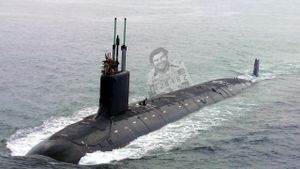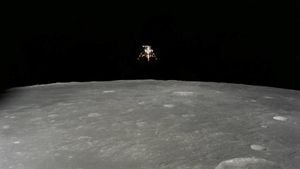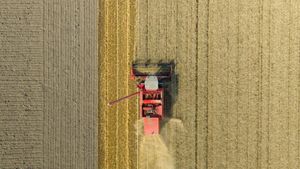Boeing’s Starliner mission has hit rocky waters, with two astronauts adrift on the International Space Station (ISS) far longer than anyone anticipated. Butch Wilmore and Suni Williams had originally planned for just eight days of checking systems aboard the Starliner, yet they now face the prospect of being stuck for possibly months.
The trouble began even before docking; during their approach, five thrusters malfunctioned, leading to gas leaks. What was expected to be a routine mission has now extended over eight weeks, raising serious concerns about the spacecraft’s readiness for crew return.
NASA and Boeing are deep in troubleshooting talks to decide if Starliner is safe enough for the astronauts' return. Early on, NASA even discussed extreme contingency plans, including sending the Starliner back empty and using SpaceX’s Crew Dragon to bring Wilmore and Williams home.
Nobody could have prepared for such protracted chaos during what was meant to be Starliner’s inaugural crewed test flight. The goal was to certify the spacecraft for future missions, but the situation has left both the astronauts and the spacecraft facing significant uncertainties.
Throughout the month of August, concerns grew about Starliner’s battery life, which has been extended through charging aboard the ISS. Even so, NASA officials recognized the potential vulnerability, as these batteries only hold power for 45 days.
Ken Bowersox, associate administrator at NASA, emphasized the urgency surrounding the decision of how to bring the crew home. The clock is ticking as the agency seeks every piece of data before making such critical choices involving the astronauts’ safety.
Adding the mounting pressure are the unresolved thruster issues, critical for undocking from the ISS. If multiple thrusters fail during this phase, the Starliner could drift uncontrollably—to disastrous consequences.
This precarious situation has prompted alarm at NASA, especially when considering the potential for collision with the ISS. Astronomer Jonathan McDowell flagged the severity of the situation, shedding light on the risks posed by returning the craft without addressing existing problems.
For the astronauts trapped aboard the ISS, the prolonged mission has shifted from system evaluations to general maintenance and conducting experiments. The added stress of being stranded away from home, coupled with unexpected responsibilities, has weighed heavily on their morale.
While the agency has navigated dangerous missions before, the chilling memories of the Challenger and Columbia disasters surmise new protocols ensuring crew safety remains at the forefront. NASA has become increasingly cautious, learning from past missteps to avoid shortcuts.
Plans to inspect the malfunctioning hardware externally were deemed impractical; spacewalks for astronauts were quickly ruled out by agency officials. They remain focused on finding solutions to the issues at hand without exposing personnel to additional risks.
With time running out for definitive choices, NASA is actively preparing for critical assessments of data and technical evaluations. The authorities plan to lay down groundwork for final preparations as they inch closer to deciding whether to bubble-wrap the spacecraft for return flight readiness or devise alternate routes for crew recovery.
This enigma doesn't just impact the current mission; it raises questions about the long-term viability of Boeing’s role within crewed spaceflight ventures. Initially hailed as potentially groundbreaking, the Starliner program is now mired with turmoil and skepticism about its future.
Throughout the challenges, Boeing's credibility faces intense scrutiny within the aerospace community. Issues across their broader fleet, including the notorious 737 MAX crisis, have already raised eyebrows, and the Starliner affair could deepen these concerns.
Reflecting on the mission’s trials, Boeing faced setbacks even prior to the launch, leading to doubts over their focus on quality assurance and craftsmanship. The prolonged schedule has left many wondering how this turbulence will affect both NASA's and Boeing’s joint aspirations for future exploratory endeavors.
Back on the ISS, Wilmore and Williams are coping with the strain of extended separation from family and earthbound life. Joe Acaba, NASA’s chief astronaut and liaison between the agency and the crew, relayed insight on the emotional toll of the mission.
Family and friends await their return, hoping for news of relief soon. By the end of August, the fate of the astronauts is expected to be decided, and not just by agency officials but the eager families and space enthusiasts worldwide.
The situation encapsulates the duality of excitement and terror often inherent with advancing aerospace achievements. Amid the lessons learned, both NASA and Boeing face the looming question of stability for their continued pursuits surrounded by the struggles of Starliner’s maiden flight.
Crucially, the focus remains on the astronauts’ safety and mission viability, balanced by the relentless pressure of time and resources. Stakeholders everywhere watch closely, waiting for the outcome of this high-stakes drama to ascertain whether it emerges as disastrous or hopeful.
With each day, there remains hope for the eventual recovery of both astronauts and spacecraft. Whether this mission is remembered for its fumbles or resilience will soon be determined, leaving many to wonder about the limits of space exploration and corporate accountability.



